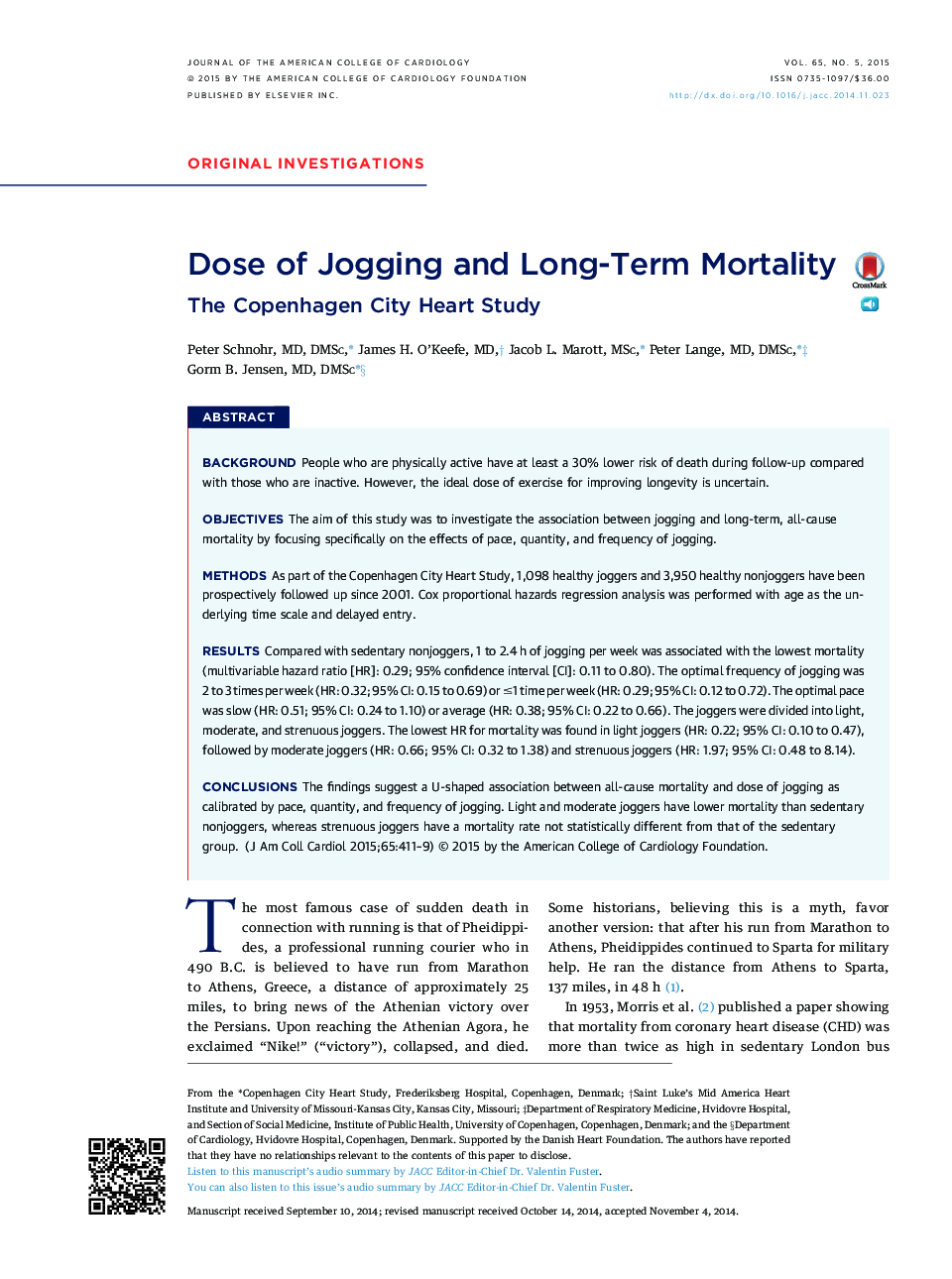| Article ID | Journal | Published Year | Pages | File Type |
|---|---|---|---|---|
| 5982762 | Journal of the American College of Cardiology | 2015 | 9 Pages |
BackgroundPeople who are physically active have at least a 30% lower risk of death during follow-up compared with those who are inactive. However, the ideal dose of exercise for improving longevity is uncertain.ObjectivesThe aim of this study was to investigate the association between jogging and long-term, all-cause mortality by focusing specifically on the effects of pace, quantity, and frequency of jogging.MethodsAs part of the Copenhagen City Heart Study, 1,098 healthy joggers and 3,950 healthy nonjoggers have been prospectively followed up since 2001. Cox proportional hazards regression analysis was performed with age as the underlying time scale and delayed entry.ResultsCompared with sedentary nonjoggers, 1 to 2.4 h of jogging per week was associated with the lowest mortality (multivariable hazard ratio [HR]: 0.29; 95% confidence interval [CI]: 0.11 to 0.80). The optimal frequency of jogging was 2 to 3 times per week (HR: 0.32; 95% CI: 0.15 to 0.69) or â¤1 time per week (HR: 0.29; 95% CI: 0.12 to 0.72). The optimal pace was slow (HR: 0.51; 95% CI: 0.24 to 1.10) or average (HR: 0.38; 95% CI: 0.22 to 0.66). The joggers were divided into light, moderate, and strenuous joggers. The lowest HR for mortality was found in light joggers (HR: 0.22; 95% CI: 0.10 to 0.47), followed by moderate joggers (HR: 0.66; 95% CI: 0.32 to 1.38) and strenuous joggers (HR: 1.97; 95% CI: 0.48 to 8.14).ConclusionsThe findings suggest a U-shaped association between all-cause mortality and dose of jogging as calibrated by pace, quantity, and frequency of jogging. Light and moderate joggers have lower mortality than sedentary nonjoggers, whereas strenuous joggers have a mortality rate not statistically different from that of the sedentary group.
